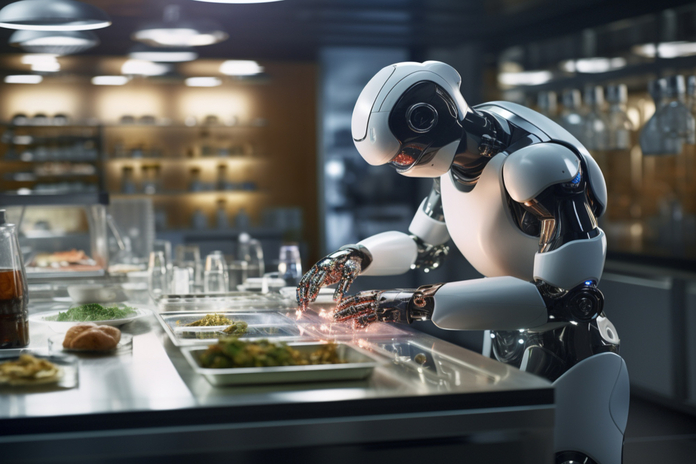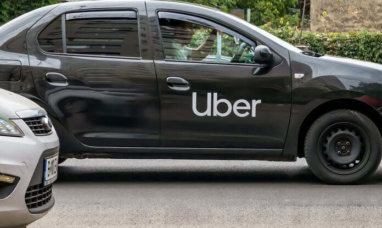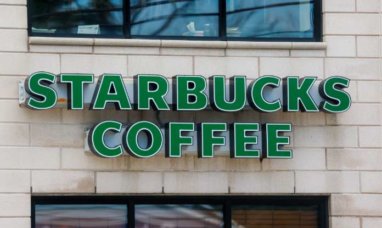As the demand for faster service and affordable prices continues to grow, leading fast-food chains are increasingly turning to restaurant automation technology to stay competitive. Companies like Sweetgreen (NYSE:SG), Chipotle (NYSE:CMG), and Shake Shack (NYSE:SHAK) are embracing robotics and automation to enhance efficiency, reduce labor costs, and offer a consistent customer experience. This shift is not only transforming the industry but also setting new standards for how food is prepared and delivered.
Sweetgreen’s Infinite Kitchen: A Model for Efficiency
Sweetgreen has taken a significant step in the realm of restaurant automation technology with its Infinite Kitchen pilot stores. Launched in May 2023 in Illinois, these stores use a series of automated dispensers to create perfectly portioned salad bowls in just three and a half minutes. Sweetgreen CEO Jonathan Neman highlighted the benefits of this technology, noting that it has improved both food quality and service speed.
With three Infinite Kitchens already operational and plans to open seven more by the end of the year, Sweetgreen is leading the charge in integrating automation into the fast-casual dining experience. At its New York Penn Plaza location, the Infinite Kitchen has demonstrated the capability to produce up to 500 bowls per hour, requiring only a third of the staff needed in traditional stores. This reduction in manual labor has led to a 45% decrease in employee turnover, illustrating the potential of automation to improve workforce stability.
Chipotle’s Journey with Automation
Chipotle has also ventured into restaurant automation technology, though its path has had some bumps along the way. The introduction of Chippy, a tortilla-making robot, in 2022 did not meet the company’s expectations. However, Chipotle quickly pivoted to develop Autocado, a robot designed to peel and core avocados for its signature guacamole. Launched in July 2023, Autocado is now in its third iteration and is expected to significantly streamline guacamole preparation.
In addition to Autocado, Chipotle introduced a digital makeline where burrito bowls and salads are assembled as they move along a conveyor belt, with each ingredient automatically dispensed. Former CEO Brian Niccol mentioned that these innovations are undergoing final checks before being pilot tested in a restaurant, signaling Chipotle’s ongoing commitment to leveraging automation for operational efficiency.
White Castle and the Evolution of Flippy
White Castle has been another pioneer in restaurant automation technology, starting with the introduction of Flippy, a robotic assistant that automates the frying process. Flippy fills fryer baskets with potatoes, dunks them in oil, and removes the fries once cooked. The chain has since upgraded to Flippy 2, which is currently being tested in 18 of its restaurants.
Miso Robotics, the company behind Flippy, believes that automation is the future of fast food. CEO Rich Hull pointed out that with rising labor costs, automation is becoming increasingly necessary to maintain profitability. Hull argued that automating the most challenging tasks in a commercial kitchen allows workers to be reassigned to higher-value positions, justifying higher wages in states like California, where new fast food wage laws have been enacted.
Shake Shack’s Autonomous Delivery
Shake Shack (NYSE:SHAK) is taking restaurant automation technology to the next level by partnering with Serve Robotics to deliver its Uber Eats borders using autonomous robots in Los Angeles. Serve Robotics CEO Ali Kashani emphasized that these robots are outperforming human couriers, with a delivery success rate of 99.94%. This high efficiency not only reduces delivery costs but also enhances customer satisfaction by ensuring timely and reliable service.
The Future of Restaurant Automation Technology
As labor costs continue to rise and consumers demand faster, more affordable service, restaurant automation technology is poised to become a cornerstone of the fast-casual and quick-service restaurant industries. Companies like Sweetgreen, Chipotle, White Castle, and Shake Shack are at the forefront of this transformation, using innovative technologies to redefine how food is prepared and delivered.
The integration of automation into these chains is not just about cutting costs; it’s about creating a more efficient, consistent, and enjoyable dining experience. As these technologies evolve and become more widespread, the landscape of the fast-food industry is likely to change dramatically, offering a glimpse into the future of dining.
Featured Image: Freepik















